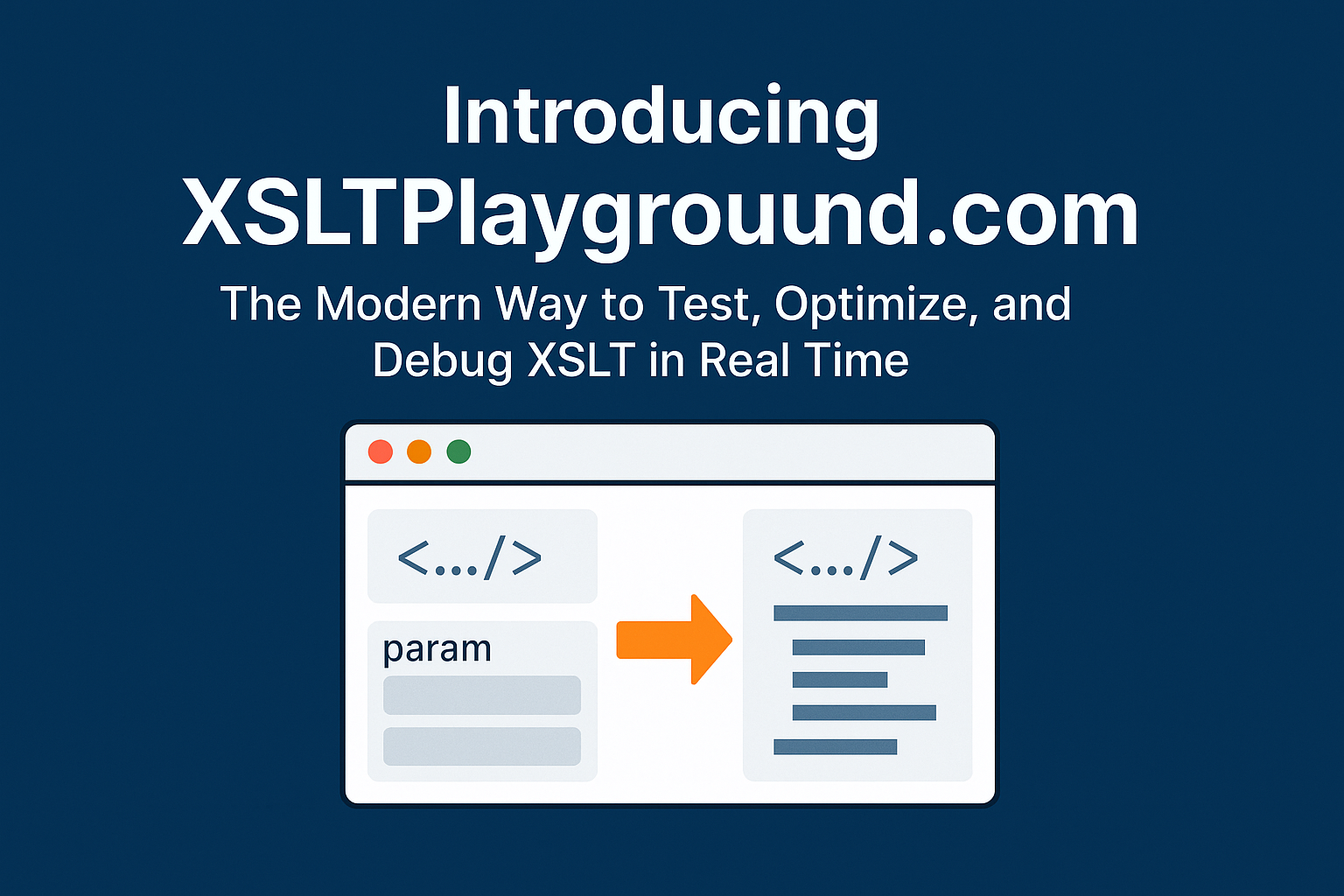Introducing XSLTPlayground.com — The Modern Way to Test, Optimize, and Debug XSLT in Real Time
Discover XSLTPlayground.com — a free, web-based tool to edit, test, and optimize XSLT in real time. Supports multi-input, parameter sync, performance insights, and more.








